May 19, 2019 - WWII Airshow - Part III
World War I Hangar and Collection
|
| The unique hangar was built to look like what they had in World War I. |
| |
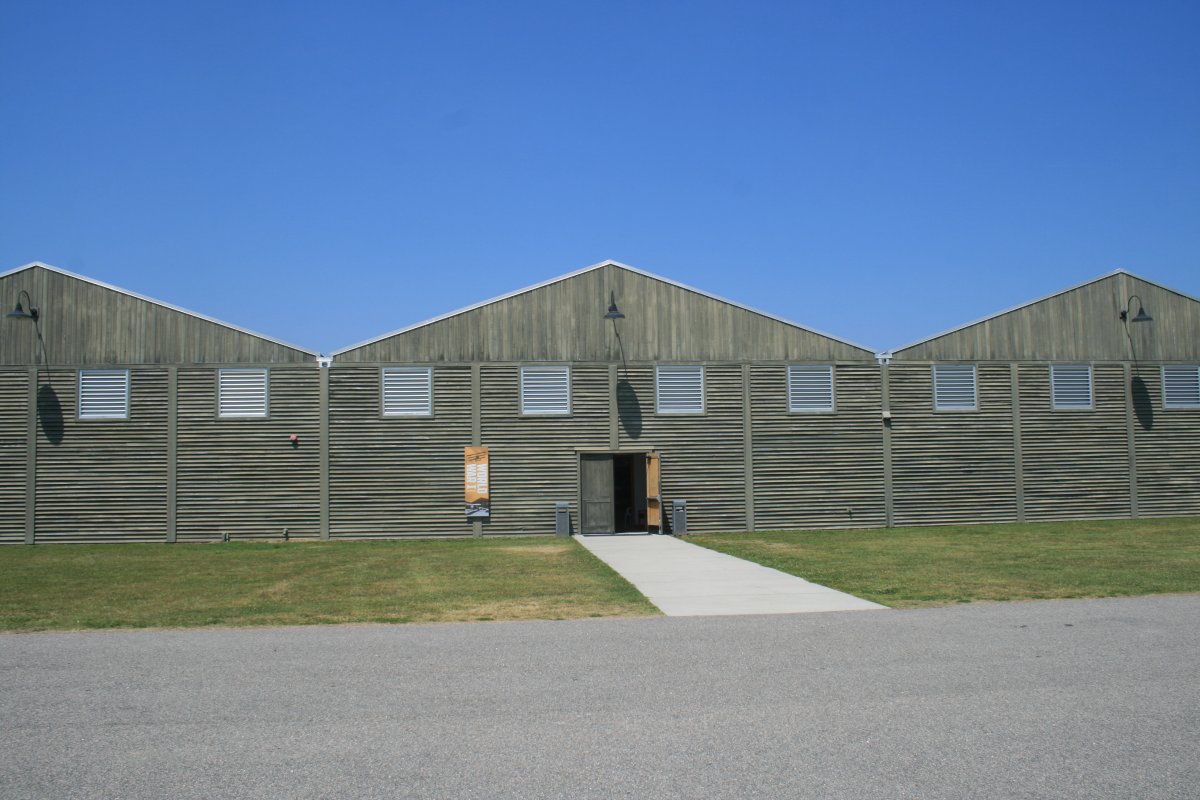 |
|
|
In the hangar, they had not one, not two, but three airworthy Fokker DR-1 Triplanes! Of course, there has to be one painted all red like the Red Baron's.
|
| |
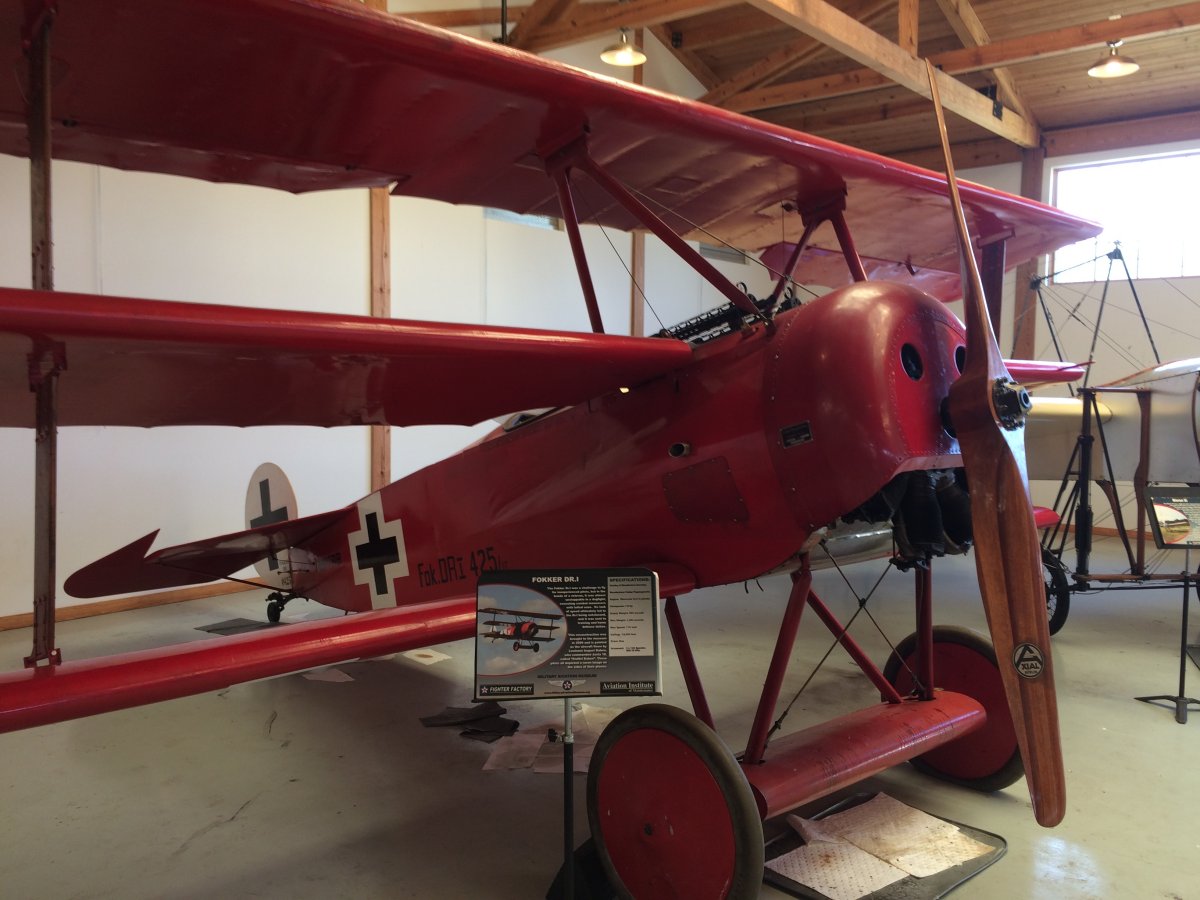 |
|
| The guns and cockpit looked the most original of the three Triplanes on this one. |
| |
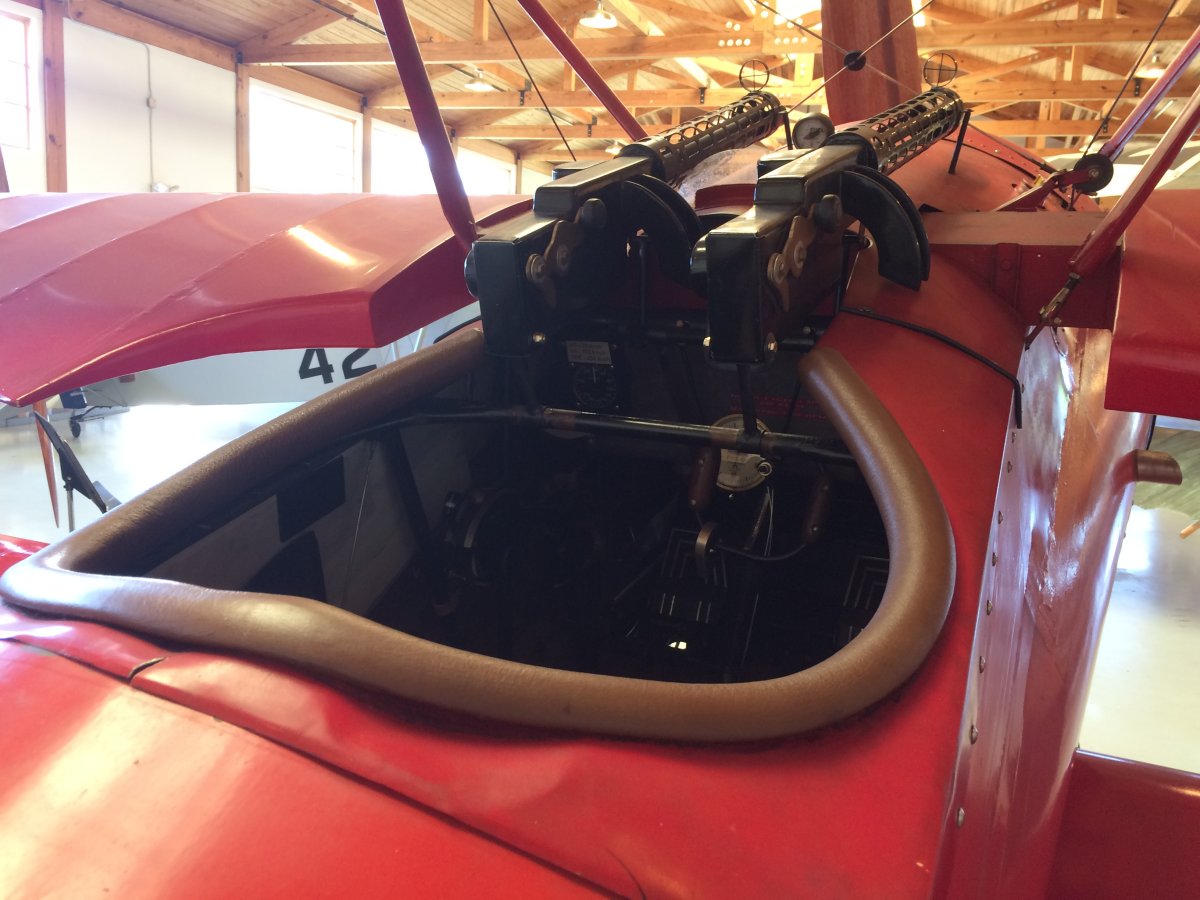 |
|
| Triplane number two. Most German Triplanes had this paint scheme: green brushed over cyan blue on the top and blue on the undersides. |
| |
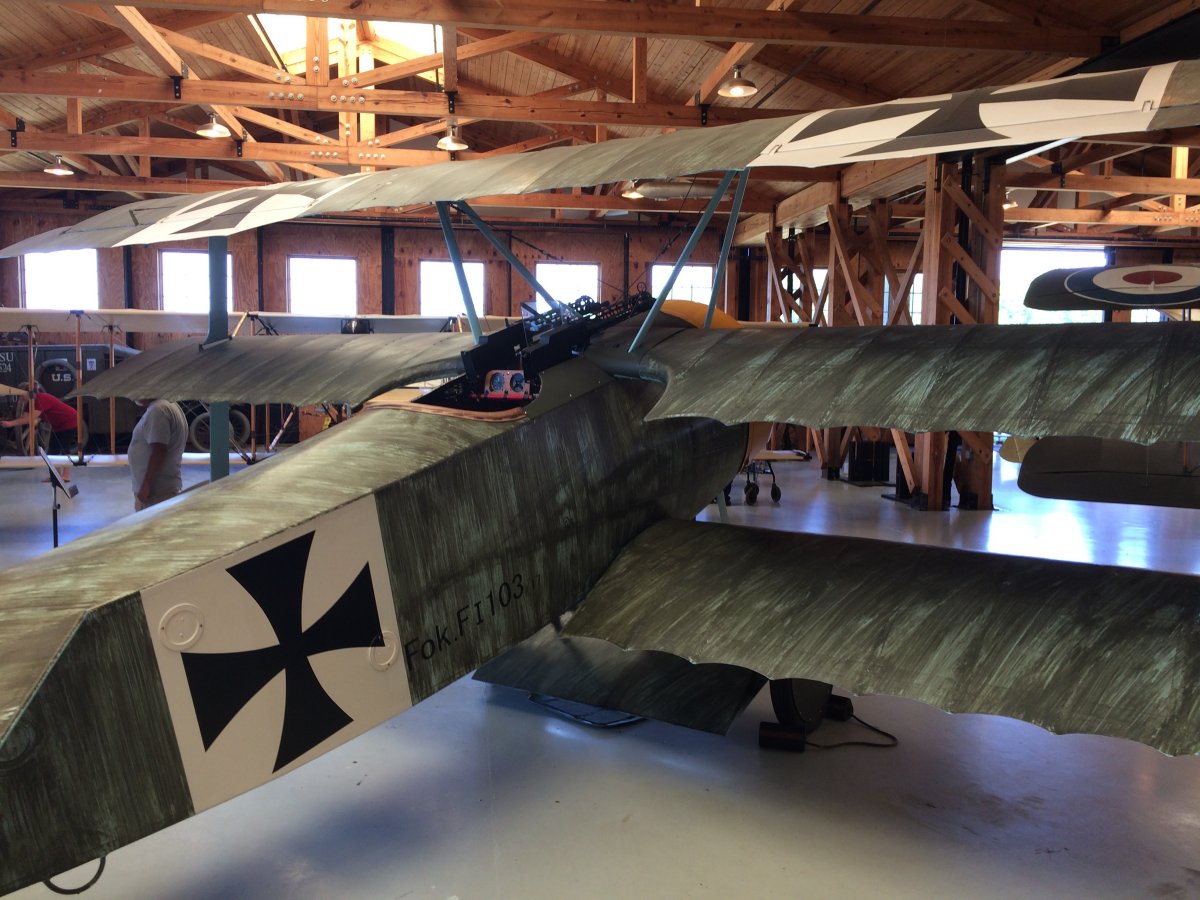 |
|
|
Plus some color on the nose.
|
| |
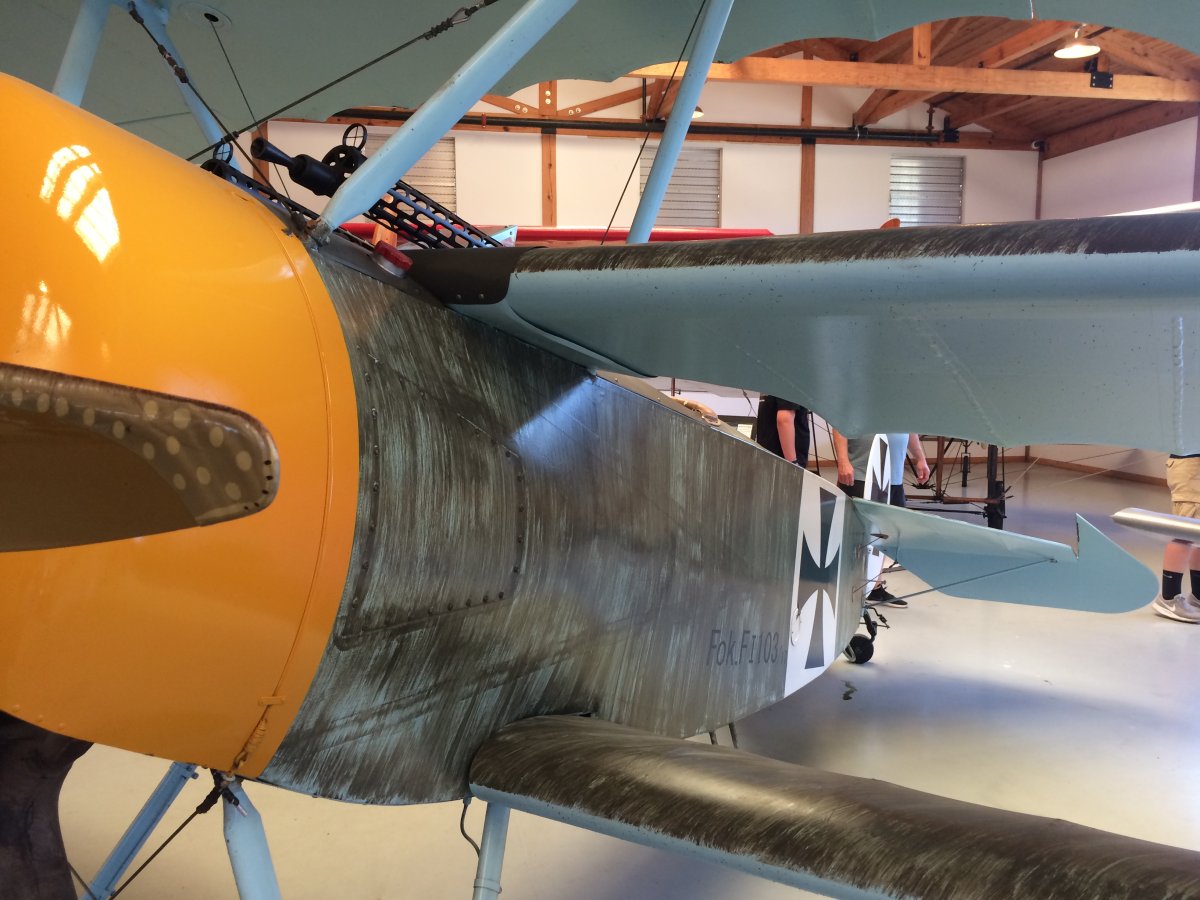 |
|
| Looks like this one has modern instruments and switches. Plus the guns are missing a few things. |
| |
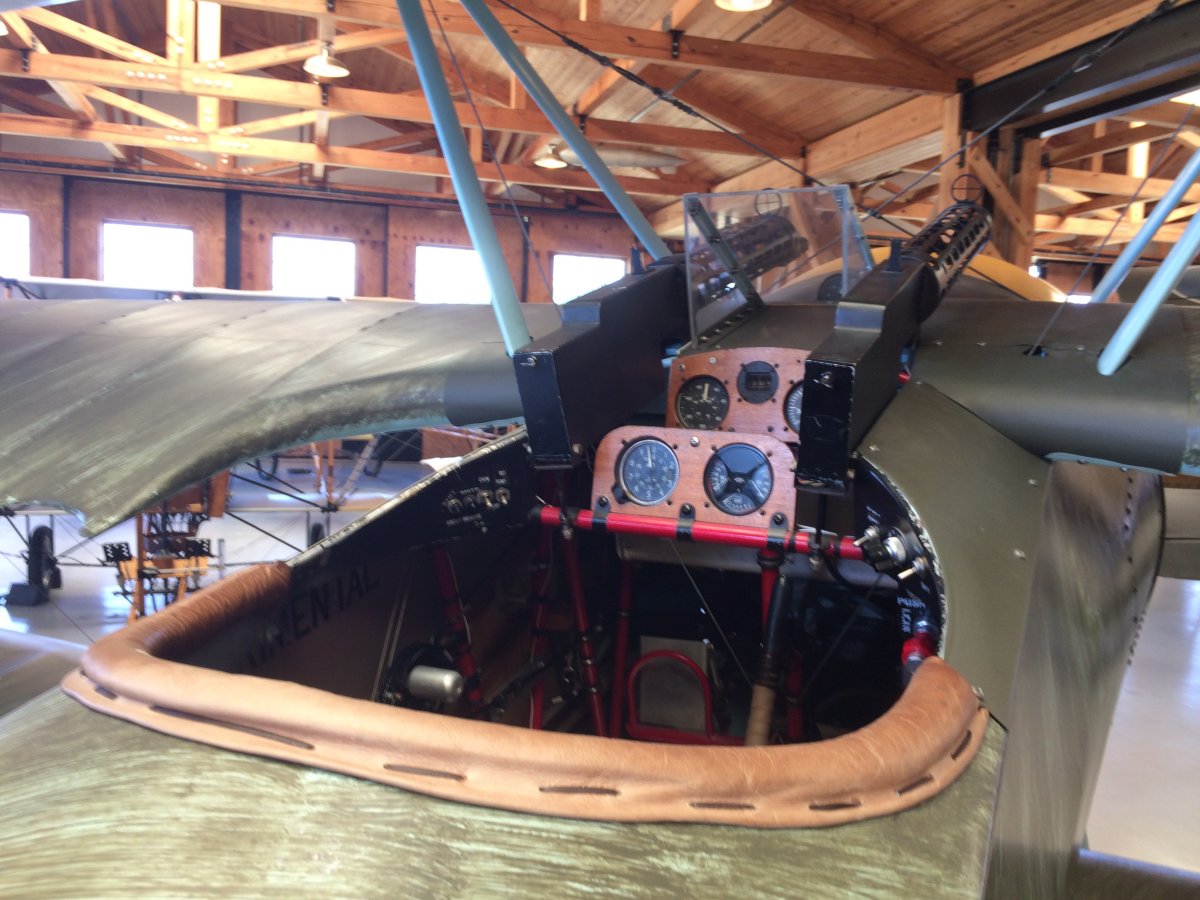 |
|
| The third Triplane was also all red but had an unusual cowl and a radial engine. |
| |
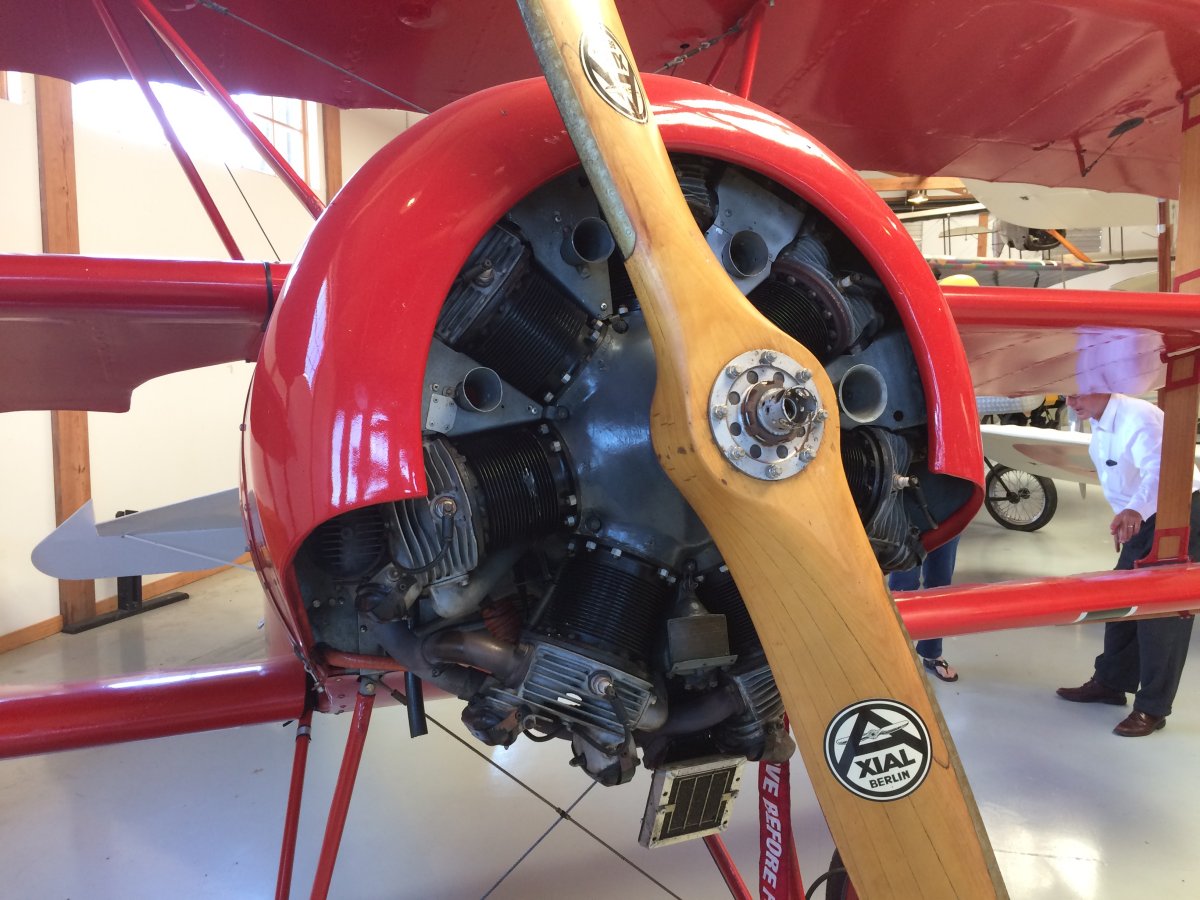 |
|
| The cockpit looked very homebuilt to me: nothing fancy, does the job. |
| |
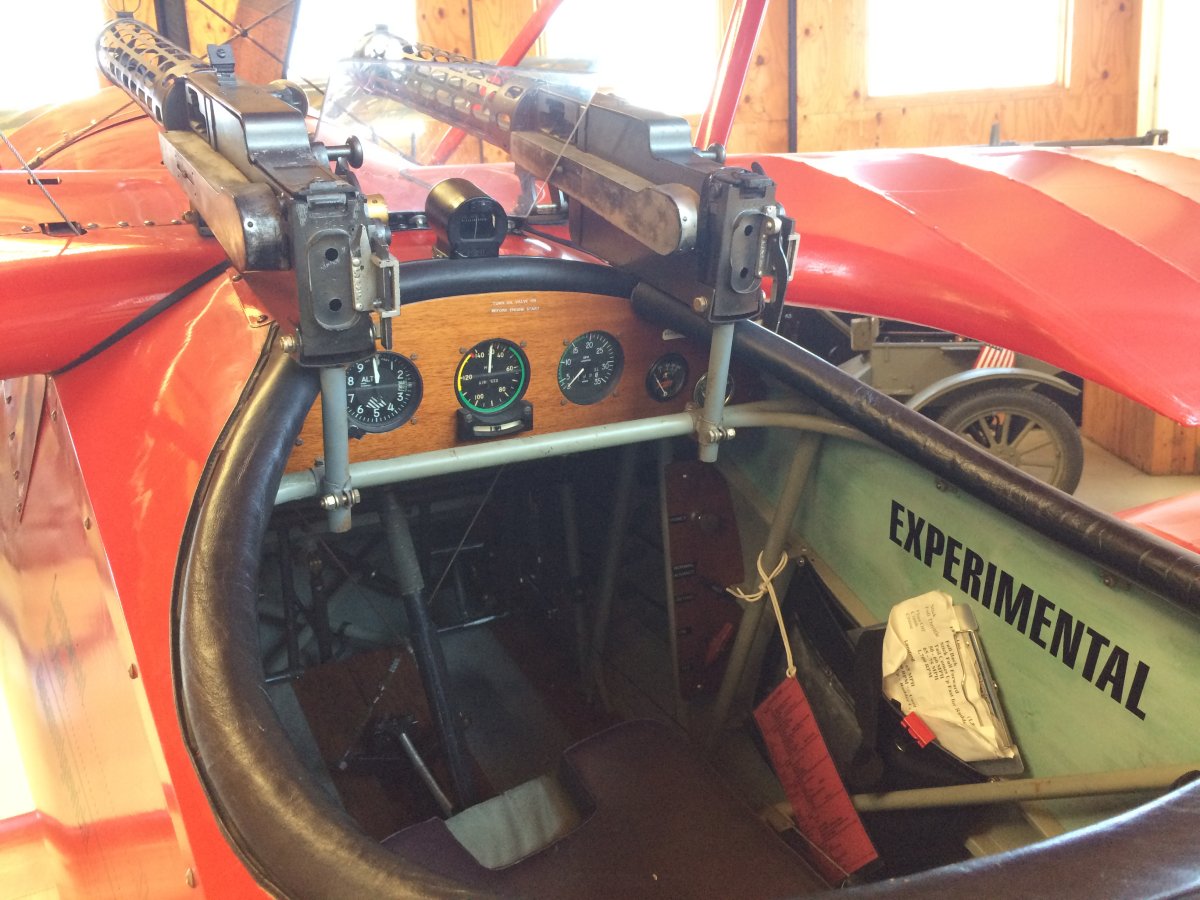 |
|
| A better look inside. On the Sands plans, the throttle and stick are much more intricate as they replicate what the Triplanes had back in 1917. The stick on this one is just a steel tube like on my RV. The throttle looks as simple as it gets. Instruments - altimeter, airspeed, tach, what more do you need? |
| |
 |
|
| A replica of a Bleriot XI, the plane Louis Bleriot used to make the first flight across the English Channel in 1909. I'd love to see this one fly! |
| |
 |
|
|
Look at that little three cylinder engine. Only 25 horsepower. Max speed 47 mph.
|
| |
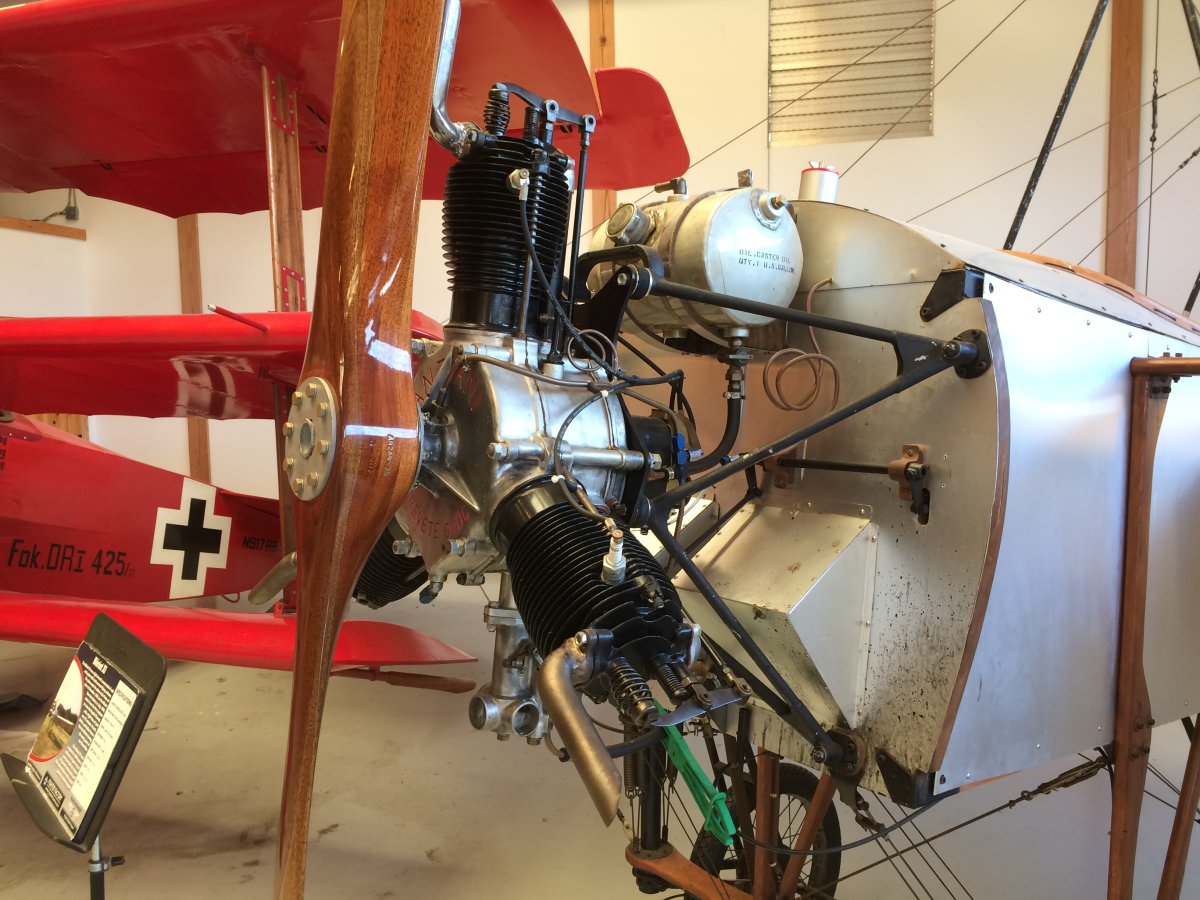 |
|
| We toured England last year and I was able to see the actual spot where Bleriott landed near Dover Castle. |
| |
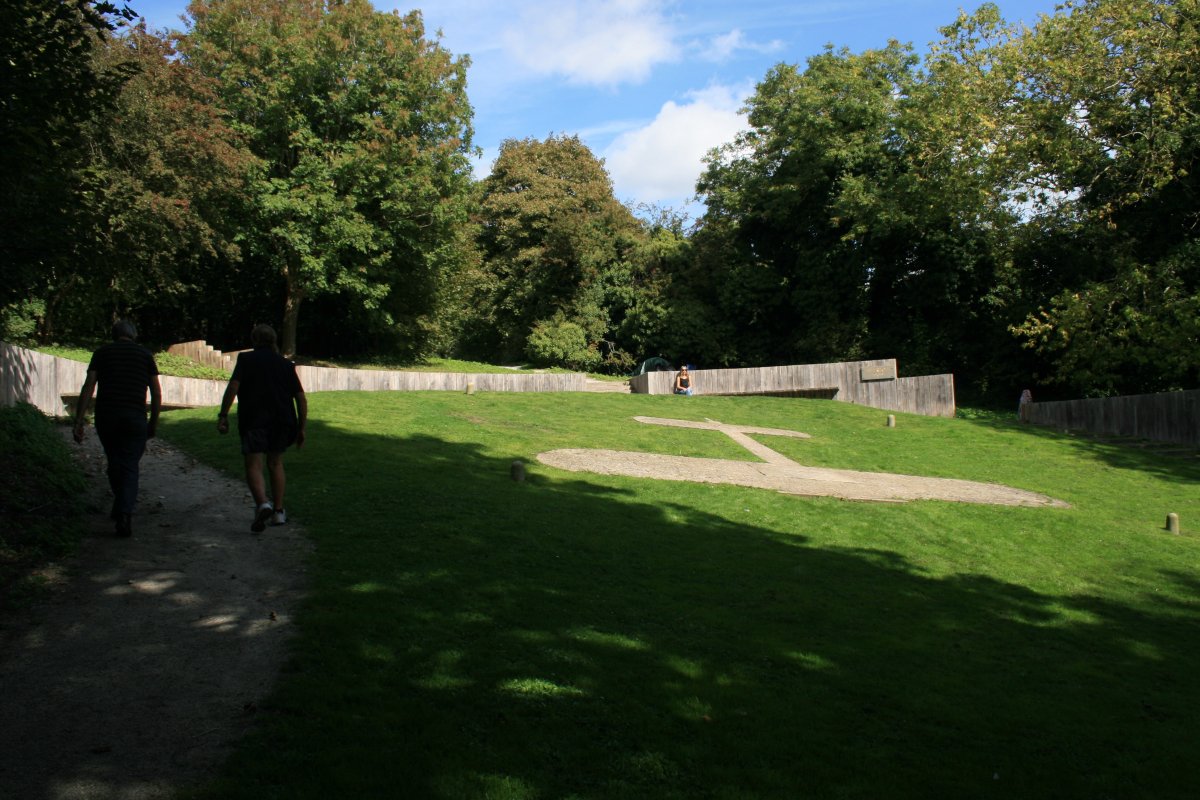 |
|
|
Of course, back in 1909 this area was not wooded. Here is a picture of how it looked like at the time.
|
| |
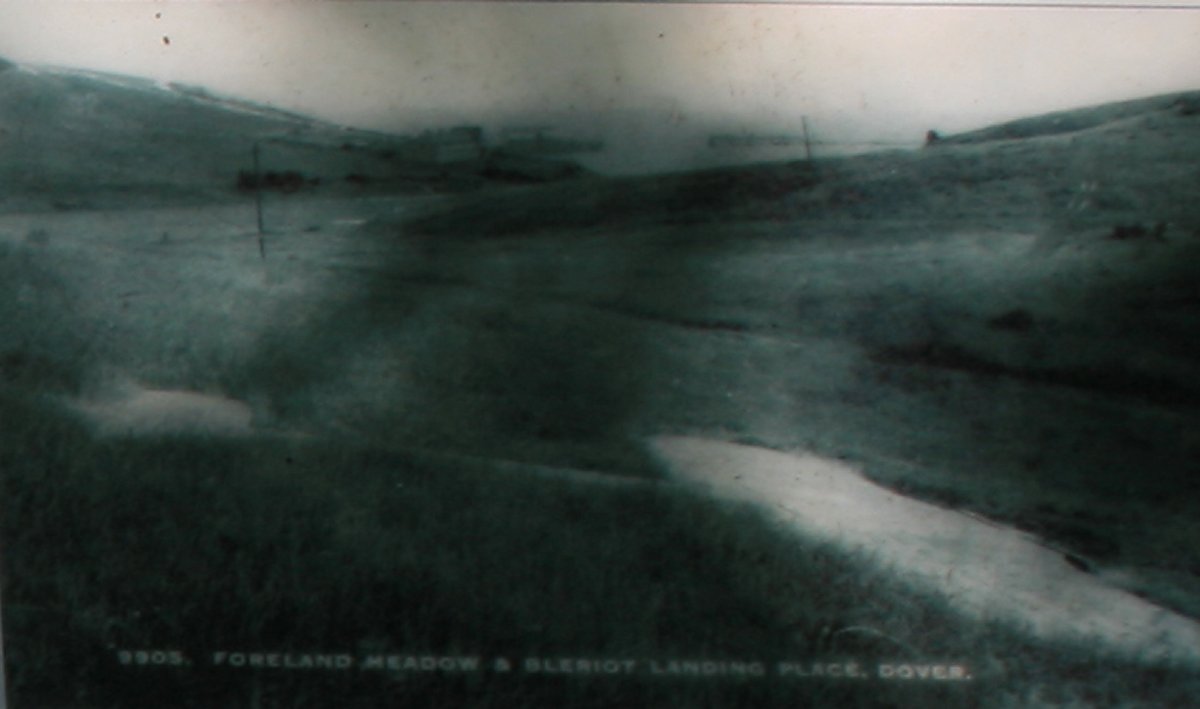 |
|
| Despite its iconic status, the Triplane was not all that successful. It was only used in the spring of 1918 and only 320 were built. The plane that replaced it, the Fokker D.VII pictured here, was much more successful and built in large numbers. |
| |
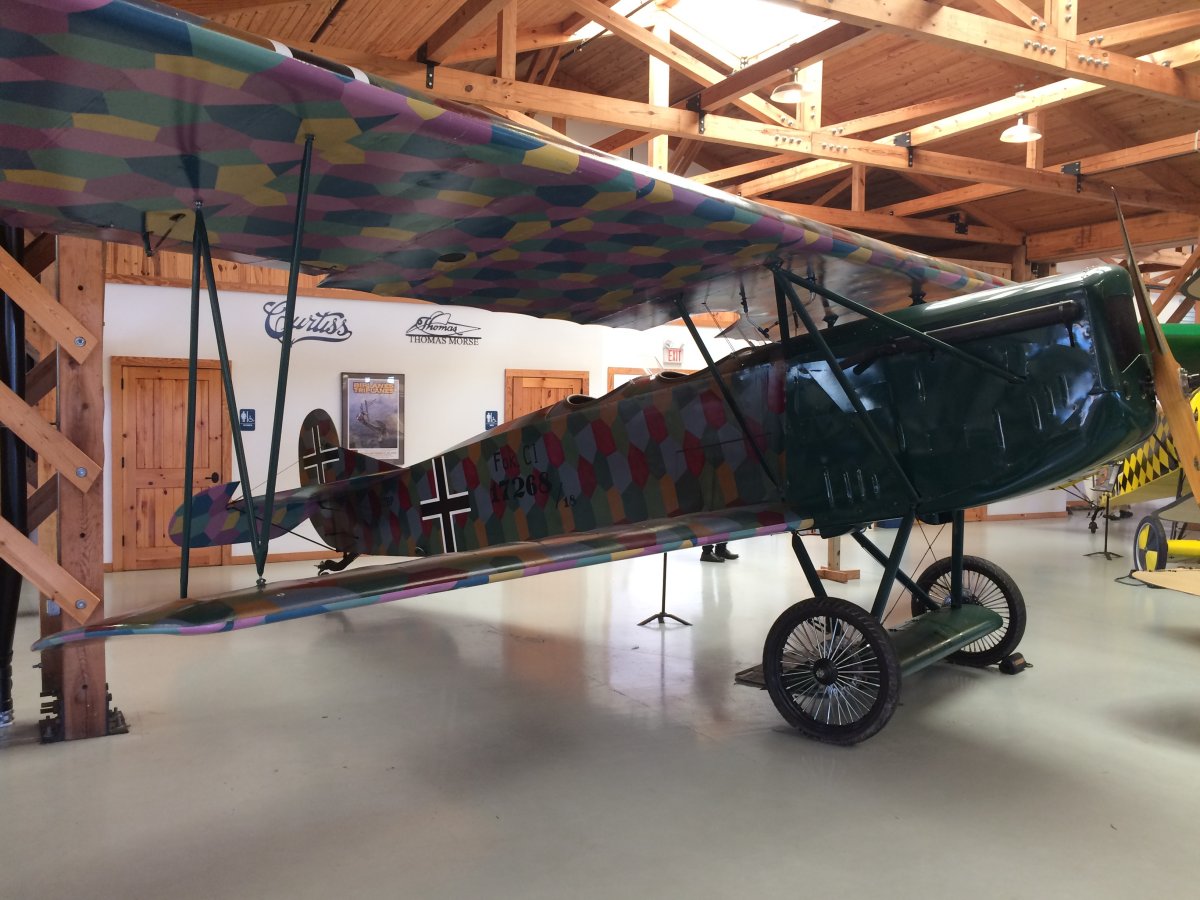 |
|
| That lozenge camouflage pattern on the D.VII's must have been incredibly time-consuming to put on. |
| |
 |
|
The Fokker Eindecker E.III, the first fighter plane in history. As you can see, it was a simple airplane. But a synchronization gear enabled its pilot to fire a machine gun through the arc of the propeller without striking the blades. As a result, the Germans enjoyed air superiority over western Europe for nine months until the allies copied the technology and built their own fighters. |
| |
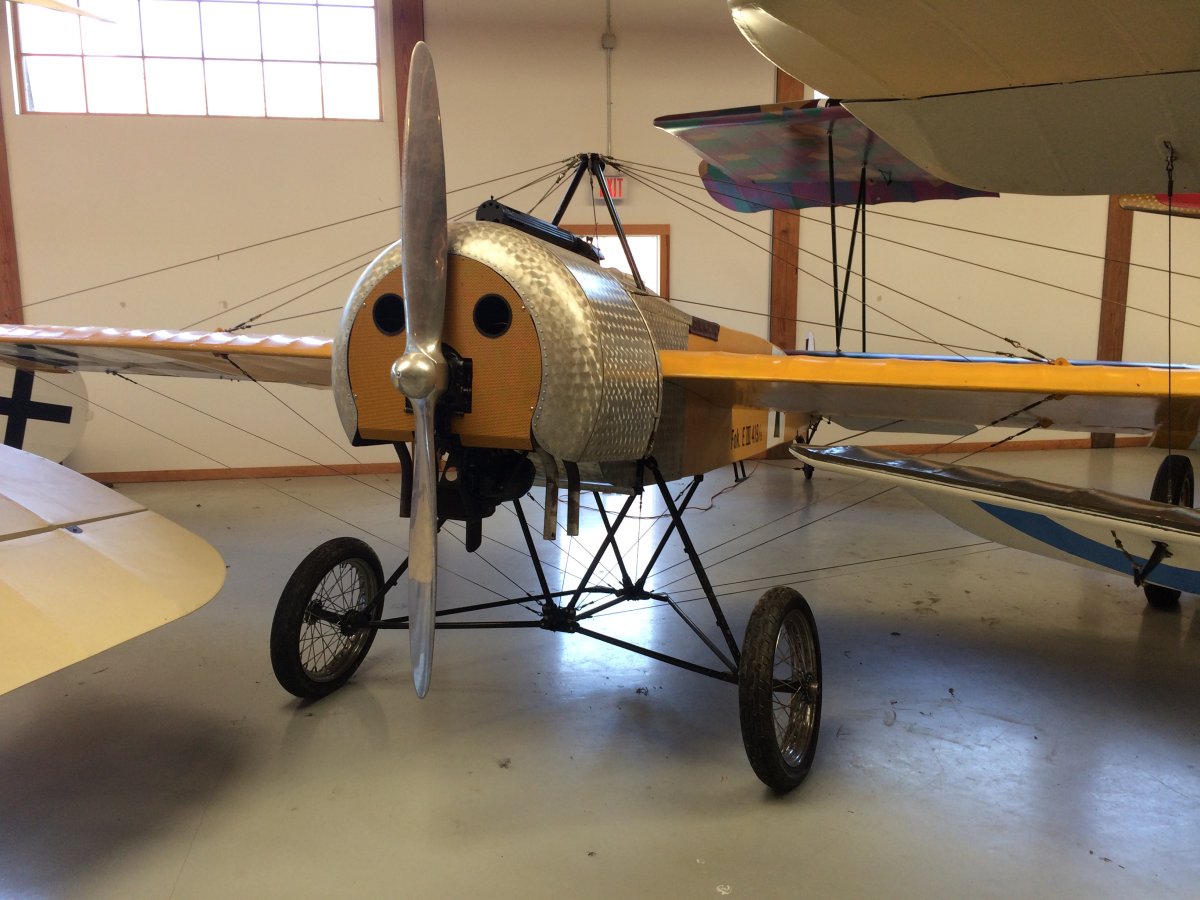 |
|
|
A side view of the Eindecker. Plus you can see the neat wood structure of this WWI hangar.
|
| |
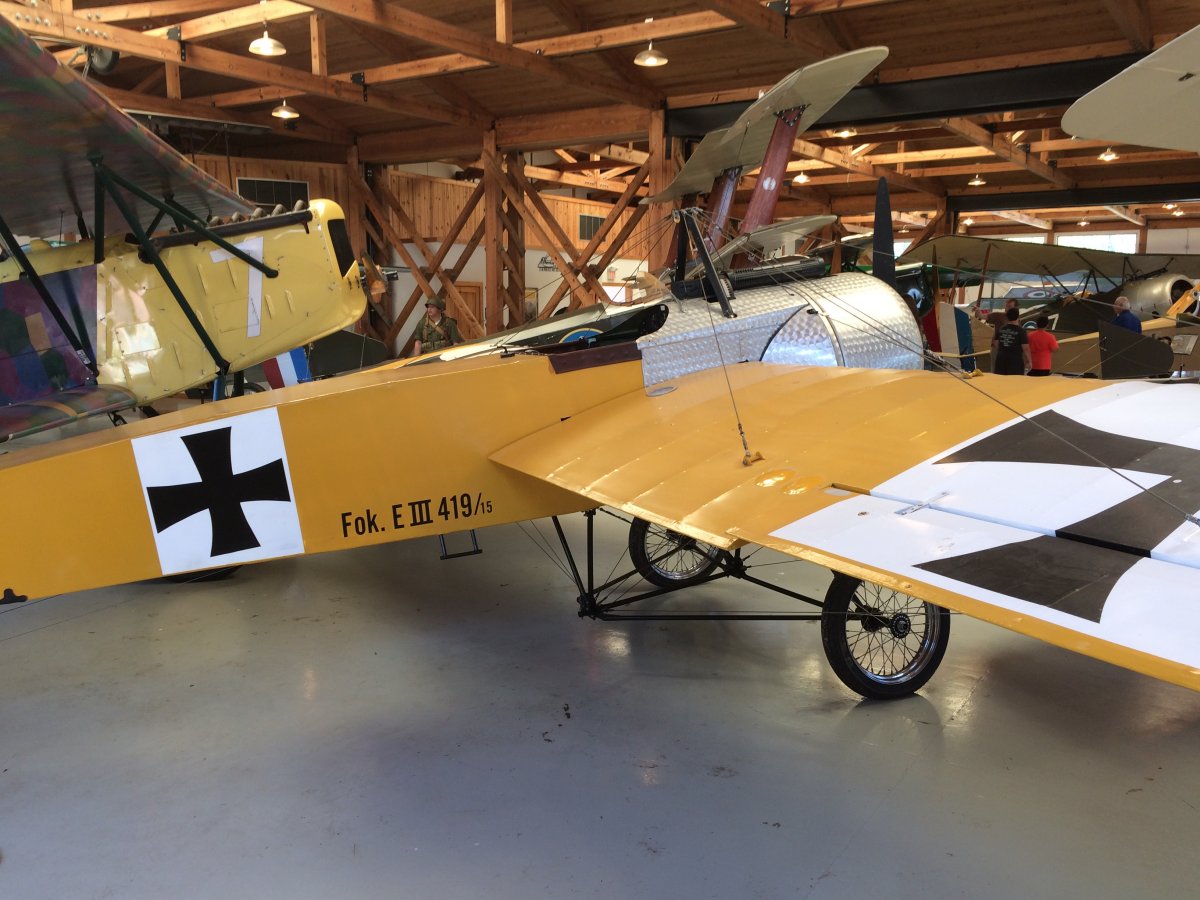 |
|
A Sopwith Triplane, which actually preceded the German Fokker Triplane. Of course, the Germans saw the British Triplanes flying around and said "we have to have one too!". |
| |
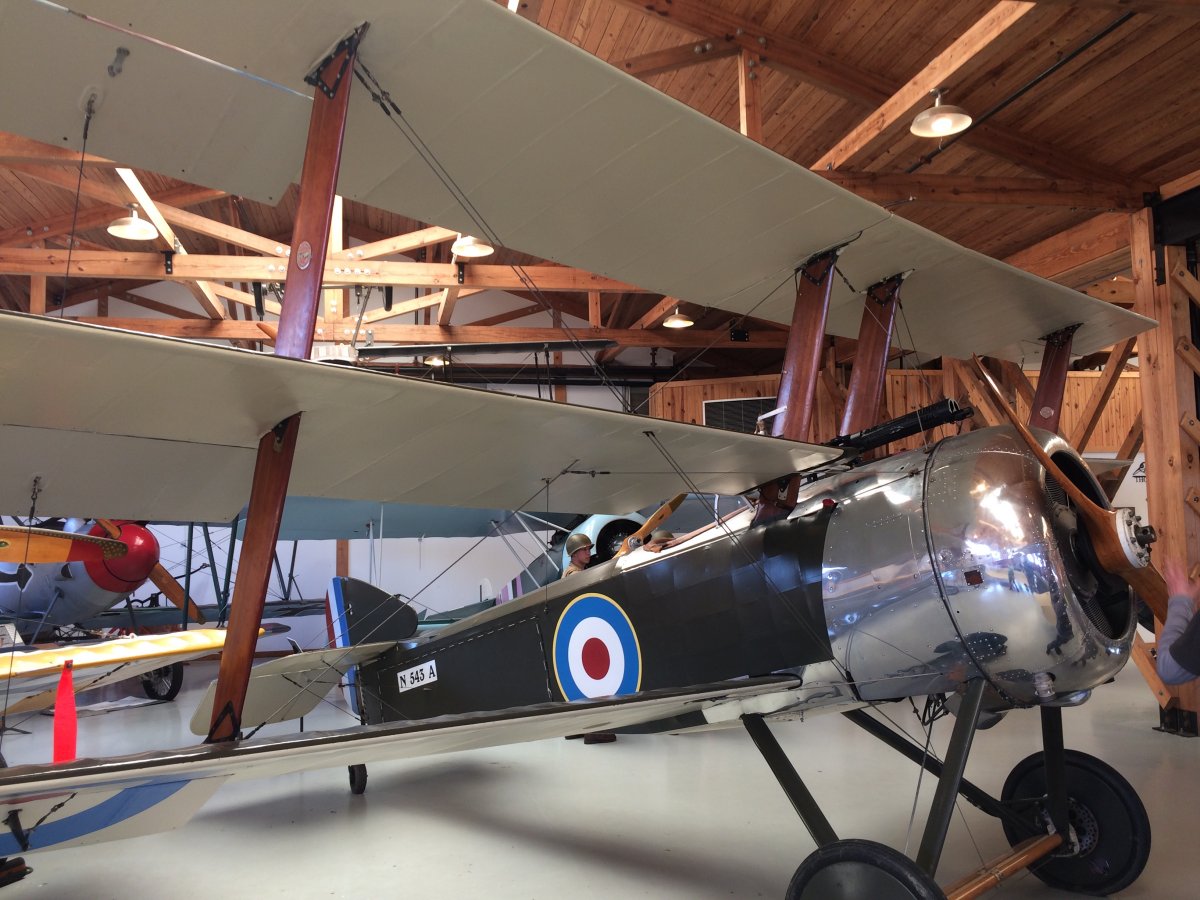 |
|
| A rare example of an Albatros D.Va. The Albratros fighter series was the mainstay German fighter prior to the Triplane and D.VII. |
| |
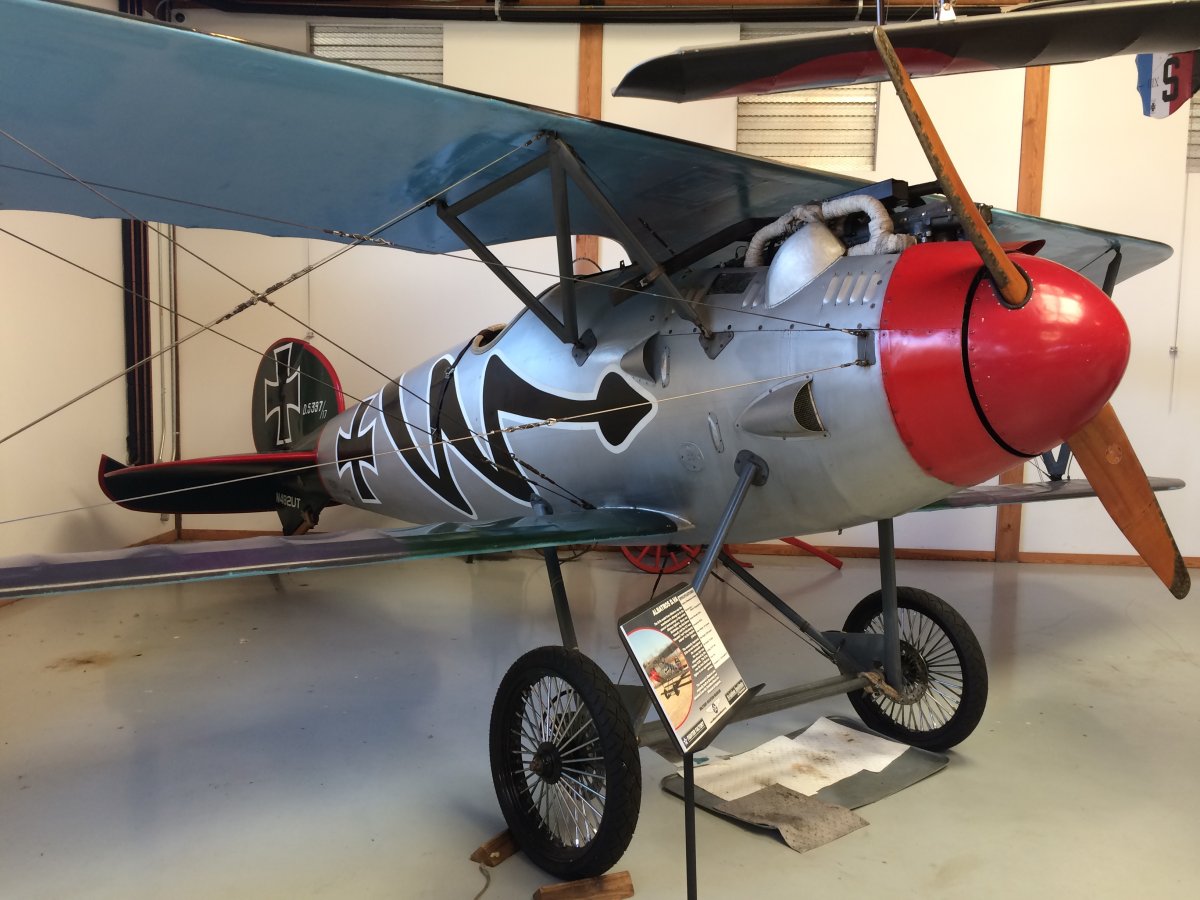 |
|
| A French SPAD hangs inverted from the rafters. |
| |
 |
|
| |
| |
| |
|
|
|
|
|
|



















